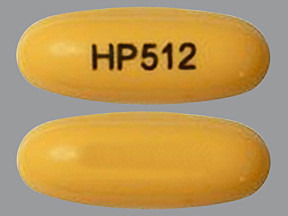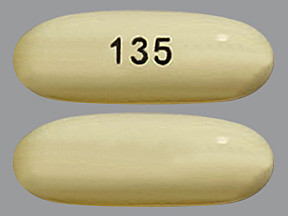NIMODIPINE - ORAL
PHONETIC PRONUNCIATION: (nye-MOE-di-peen)
COMMON BRAND NAME(S): Nymalize
GENERIC NAME(S): nimodipine
Uses
USES: Nimodipine is used to decrease problems due to a certain type of bleeding in the brain (subarachnoid hemorrhage-SAH). Nimodipine is called a calcium channel blocker. The body naturally responds to bleeding by narrowing the blood vessel to slow blood flow. However, when the bleeding is in the brain, stopping blood flow causes more brain damage. Nimodipine is thought to work by relaxing narrowed blood vessels in the brain near the area of bleeding so blood can flow more easily. This effect reduces brain damage.
How to use NIMODIPINE - ORAL
HOW TO USE: See also Warning section. Read the Patient Information Leaflet if available from your pharmacist before you start taking nimodipine and each time you get a refill. If you have any questions, ask your doctor or pharmacist. Nimodipine is usually started as soon as possible after the start of bleeding in the brain, usually within 4 days. Nimodipine is usually taken every 4 hours or as directed by your doctor. If you are taking the tablet form of this medication, take it by mouth with a full glass of water (8 ounces/240 milliliters) unless your doctor directs you otherwise. Do not lie down for at least 10 minutes after taking this medication. Swallow the tablet whole. Do not crush. If you are taking the capsule form of this medication, take it by mouth at least 1 hour before and 2 hours after meals, or as directed by your doctor. Swallow the capsule whole. If you cannot swallow a whole capsule, you may poke a hole in the capsule, draw the liquid out with a syringe, and give it by mouth or through a nasogastric tube with an oral syringe. Do not mix the contents of the capsule with other liquids. Doing so may prevent the medication from working. Do not inject this medication. If you are using the liquid form (oral solution) of this medication, carefully measure the dose using a special measuring device/spoon. Do not use a household spoon because you may not get the correct dose. Use the liquid form at least 1 hour before and 2 hours after meals. The liquid form may also be given through a tube into the stomach (nasogastric or gastric tube). If you are giving this medication through a nasogastric or gastric tube, ask your health care professional for detailed instructions on how to give it. Do not take antacids for 2 hours before or after taking nimodipine tablets. Doing so may prevent the medication from working. Avoid eating grapefruit or drinking grapefruit juice while using this medication unless your doctor or pharmacist says you may do so safely. Grapefruit can increase the chance of side effects with this medicine. Ask your doctor or pharmacist for more details. The dosage is based on your medical condition and response to treatment. Use this medication regularly to get the most benefit from it. To help you remember, take it at the same times each day. It is important to continue taking this medication even if you feel well, and even if you do not see any improvement in your symptoms. Consult your doctor or pharmacist for details. Do not suddenly stop taking this medication without consulting your doctor. This medication is usually taken for 2 to 4 weeks. Follow your doctor's directions carefully. Your condition may become worse if the drug is stopped too soon. Tell your doctor if your condition worsens.
Side Effects
Precautions
Interactions
Overdose
Images
Reviews
Faq for NIMODIPINE - ORAL
Nimodipine is an oral medication that belongs to the class of drugs called calcium channel blockers. It works by relaxing and widening the blood vessels to improve blood flow in the brain.
Nimodipine is primarily used to prevent and treat certain types of brain damage caused by reduced blood flow, commonly seen in subarachnoid hemorrhage (a type of bleeding in the brain) caused by a ruptured blood vessel.
Nimodipine is usually taken by mouth as directed by your doctor. It is important to follow the prescribed dosage and take with food or milk to avoid stomach upset. Swallow the tablet whole, do not crush or chew it.
Common side effects of Nimodipine may include low blood pressure, headache, dizziness, nausea, and flushing. If any severe side effects or allergic reactions occur, seek medical help immediately.
Nimodipine is classified as Category C medication during pregnancy, meaning that it may have adverse effects on the fetus. It is not recommended for use during pregnancy or breastfeeding unless clearly needed and prescribed by a healthcare professional.
Several medications can interact with Nimodipine, including certain anticonvulsants, HIV protease inhibitors, rifampin, and grapefruit juice. Inform your doctor about all the medications you are taking to avoid potential drug interactions.
Nimodipine is not approved for use in children. Safety and effectiveness in pediatric patients have not been established.
The duration of Nimodipine treatment will be determined by your doctor based on your medical condition. It is important to continue taking the medication as prescribed, even if you feel better, to achieve the desired therapeutic effects.
Nimodipine should not be stopped abruptly without consulting a healthcare professional. Gradually reducing the dosage under medical supervision is usually recommended to avoid potential withdrawal symptoms.
Warning
WARNING: This medication should not be given by injection. Accidental injection of nimodipine can cause serious (rarely fatal) side effects (such as low blood pressure, slow heartbeat). Consult your doctor or pharmacist for details.
Disclaimer
IMPORTANT: HOW TO USE THIS INFORMATION: This is a summary and does NOT have all possible information about this product. This information does not assure that this product is safe, effective, or appropriate for you. This information is not individual medical advice and does not substitute for the advice of your health care professional. Always ask your health care professional for complete information about this product and your specific health needs.



No Reviews Yet